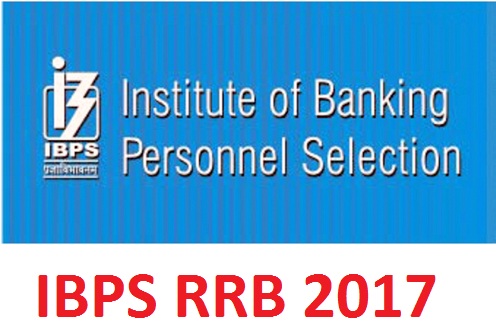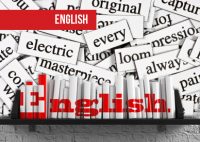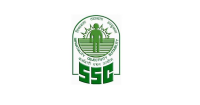Economic and Financial Terminology Part 6
Quiz – I
Economic and Finance Terminology for PO level Exams – MCQ
1) CIBIL is an organization which is engaged in
(a) Collecting and distributing information to banks
(b) Collecting application details and submitting applications to banks
(c) Collecting and recommending loans to banks and guaranteeing the same
(d) Collecting and maintaining credit record of both individual and business customers for the benefits of banks.
(e) None of these
2) NEFT Stands for ____________
(a) National Electronic Funds Transfer
(b) Negotiated Efficient Fund Transfer
(c) National Efficient Fund Transfer
(d) Negotiated Electronic Fund Transfer
3) Arbitrage is?
(a) Buying and selling in two markets simultaneously
(b) A rate of interest
(c) A Fee
(d) Arbitrage is a dispute
(e) None of these
4) For CRR and SLR current deposits are
(a) Time Liability
(b) Demand Liability
(c) Contingent Liability
(d) All of these
5) If a bank engages in a repo transaction, then it has
(a) Borrowed security and lent money
(b) Borrowed money and lent security
(c) Both (a) and (b)
(d) None of the above
6) Tier I capital of a bank consists of its
(a) Paid-up equity capital
(b) Issued and fully paid ordinary shares/ common stock and perpetual non cumulative preference shares and disclosure reserves
(c) Authorized capital
(d) None
7) Which of the following statements, is correct regarding consumer protection act?
(a) the act extends to Whole of India except the state of Jammu & Kashmir.
(b) the act applies to all goods and services except those notified by the central government.
(c) the act is called consumer protection act, 1986.
(d) All of the above
8) A mutual Fund is set up in the form of
(a) Trust
(b) A company incorporated under the companies Act
(c) An act of parliament
(d) Sponsor
(e) Multi State Coop Society
9) If the policy is issued for a period of 20 years expiring on 31st December 2012 and the insured is still alive on that date, he will not be entitled to receive any money under the ___ policy
(a) Endowment Insurance
(b) Term Insurance
(c) Money- back Policy
(d) Unit Linked Endowment Plan
10) The fund to which the domestic commercial banks have to contribute in case non-achievement of priority sector lending targets/sub-targets is
(a) Rural Infrastructure Development Fund with NABARD
(b) Financial Inclusion Fund with NABARD
(c) Financial Inclusion Technology Fund with NABARD
(d) Small Enterprises Development Fund with SIDBI
11) Which of the following is/are covered under the Banking Ombudsman Scheme, 2006?
(a) Scheduled Commercial Banks
(b) Regional Rural Banks
(c) Primary Co-operative Banks
(d) Only A and B
(e) All of the Above
12) Demand draft are issued payable to order as demand drafts payable to bearer are:
(a) not issued as they are prohibited under the Reserve Bank of India Act, 1934.
(b) issued at the specific request of important customers.
(c) issued for government departments.
(d) issued by banks, in case of urgency of funds.
13) Who can make the complaint to ombudsman?
(a) the customer himself
(b) the authorized representative of customer.
(c) Any one of a and b
(d) Only the Bank
14) In a deposit account, the relationship between bank and customers
(a) Bailee and Bailor
(b) Debtor and Creditor
(c) Principal and agent
(d) Trustee and Beneficiary
15) FSDC has constituted a Sub-Committee of focus solely on Financial Inclusion and Literacy. The main task of this Sub-Committee is
(a) to monitor the progress of financial inclusion through banks
(b) to formulate National Financial Literacy Strategy of India
(c) to develop customer protection code for financial inclusion
(d) to impact training to the bank staff on financial literacy
16) In case the securities or documents are deposited by a customer for purpose of safe custody the bankers deals with them according to the instructions of the customer, the position of the banker is that of a
(a) Debtor and Creditor
(b) Principal and Agent
(c) Trustee and Beneficiary
(d) Lessor and Lessee
17) A bank on whom a cheque is drawn by the customer is __________
(a) Collecting bank
(b) Paying Bank
(c) Advising Bank
(d) Issuing Bank
18) Which of the following terms matches closest with family floater?
(a) Health insurance
(b) property insurance
(c) Life insurance
(d) personal Accident policy
19) The characteristics of RTGS are
(a) Remittances are communicated through a structured messaging process
(b) Settlement is made on a gross basis from the liquidity maintained by the sender bank with the settlement bank
(c) Remittances are credited on a dynamic basis and settlements also made on a dynamic basis
(d) All of the above
20) Base Rate System was introduced to
(a) To address the drawbacks in BPLR System
(b) To make it suitable for CBS
(c) To address the grievance of banks
(d) To make sure that Banks in the country earn good profit
(e) None of these
21) The difference between the credit and the debit card is _________
(a) Your account gets debited immediately on using a credit card
(b) Customer account gets debited immediately on using a debit card
(c) Your account does not gets debited immediately on using a debit card
(d) None of the above
22) According to Abraham Maslow which of the following are the basic level of needs?
(a) Psychological
(b) Safety and Social
(c) Self-Esteem and Self-Actualization
(d) All the above
(e) None of these
23) The type of facility RBI provides to meet immediate needs when there is interval between expenditures and flow of revenue for both Central and State Governments.
(a) Temporary Overdrawing
(b) Tide Over Credit Facility
(c) Ways and Means Advances
(d) Line of Credit
24) __________ are instruments used by foreign investors not registered with the Indian regulators for taking an exposure in the domestic market
(a) International Notes (INs)
(b) Participatory notes (PNs)
(c) Credit Notes (CNS)
(d) Promissory Notes (PNs)
(e) None of these
25) Many times we read in financial newspapers/magazines about Systematic Investment Plans (SIPs). SIPs are an investment option also operated in the mode of?
(a) Mutual Funds
(b) Small Savings Schemes in Post Offices
(c) National Pension Fund
(d) National Saving Certificates
(e) None of these
26) Which of the following is a material alteration?
(a) An open cheque is crossed with two lines across the cheque
(b) The purchaser of a DD changes the word
(c) In a bearer cheque the holder of the cheque changes the word
(d) A blank endorsement on a cheque is converted into a full endorsement
27) X Bank grant an overdraft to Y Ltd against book debts. This is secured by:
(a) hypothecation
(b) pledge
(c) mortgage
(d) assignment
28) Which of the following statement is not true?
(a) Demand draft once purchased can not be cancelled.
(b) The payment of demand draft cannot be stopped by the purchaser
(c) Once a demand draft is lost, the purchaser can get a duplicate subject to certain conditions and payment of charges.
(d) Payee of the demand draft can get a duplicate demand draft if the original is lost.
(e) All are true
29) State which of the following statements is correct?
(a) KYC norms is applicable only to deposit accounts
(b) Either or survivor is applicable to all joint accounts
(c) A cash credit facility is a not a fund based limit
(d) An incomplete negotiable instrument is called as an inchoate instrument
30) Credit risk to the bank is high from the ________
(a) Credit Card Holders
(b) Debit Card Holder
(c) Both of the above
(d) None of the above
31) The right of a creditor to retain the goods or property of a debtor till time the debt is discharged is known as:
(a) Set-off
(b) Appropriation
(c) Lien
(d) None of the above
32) The third pillar of Basel II is based on Market Discipline. What is the underlying principle that drives the rationale under third pillar?
(a) Sound capital requirement
(b) Robust risk management policy
(c) Appropriate disclosure norms
(d) Intense competitive environment
33) The Minimum maturity period of Certificate of Deposits is
(a) 7 days
(b) 14 days
(c) 30 days
(d) 60 days
(e) None of these
34) Which of the following statements are true about NDS-OM?
(a) NDS-OM is a screen-based electronic order matching system
(b) The Membership to NDS-OM is open to Banks, Primary Dealers, Insurance Companies, Financial Institutions
(c) G-Sec, T-Bills, SDL are traded on NDS-OM
(d) All the above
35) In bankers Parlance, Set off refers to
(a) setting off legal proceedings if the borrower agrees to make payments
(b) setting off dues from one customer against dues to another customer to save reserve requirement
(c) setting off amount due from bank to one customer against amounts due from the same customer to the bank
(d) adjusting interest due from the customer on the loan against the due on Fixed deposit account
36) Identify the correct match among the following
(A) current deposits- Assets
(B) Term Loan- Liabilities,
(C) Funds Transfer- RTGS,
(D) Bancassurance-SEBI
(a) A and
(b) A, B and C
(c) C and D
(d) B and D
37) Which of the following issues LC?
(a) Sellers bank
(b) Buyers Bank
(c) Negotiating Bank
(d) Advising Bank
(e) ECGC
38) Electronic channels in retail banking refers to _________
(a) ATM
(b) Internet Banking
(c) Mobile Banking
(d) All the above
(e) None of these
39) In, NOHFC what does H stands for?
(a) Housing
(b) High
(c) Hypothecation
(d) Holding
(e)None of these
40) What is an Indian Depository Receipt?
(a) An instrument in the form of deposit receipt issued by Indian depositories
(b) A deposit account with a Public Sector Bank
(c) An instrument in the form of depository receipt created by an Indian depository against underlying equity shares of the issuing company
(d) A depository account with any of Depositories in India
(e) None of these
41) A customer has the flexibility to select the number of instalments and also very his monthly instalment amounts subject to certain conditions. Identify the account
(a) An EEFC account
(b) A variable recurring deposit account
(c) A flexi deposit account
(d) A roaming current account
42) Basel III Capital regulations will be fully implemented as on ________
(a) March 31, 2017
(b) March 31, 2018
(c) March 31, 2016
(d) March 31, 2019
43) Which among the following is False?
(a) A credit score is a number which indicates credit worthiness of an individual.
(b) A credit score indicates a profitability that a person will be able to repay or not a debt.
(c) A CIBIL Score of 900 is High Risky while a score of 300 is least risky
(d) A CIBIL Score of 300 is extremely risky while a score of 900 is least risky
44) Money lent for 1 day in Money Market is called
(a) Term Money
(b) Call Money
(c) Notice Money
(d) Short Notice Money
45) A Bridge loan is a facility sanctioned
(a) For construction of bridges in urban areas
(b) As a facility extended to avoid delay in the implementation of a project till the borrower receives the expected funds from approved sources for the project
(c) As temporary overdraft facility
(d) As a project finance
(e) None of these
46) ADRs are ____________
(a) Negotiable instruments denominated in dollars and issued by US depositary Banks
(b) Bonds issued by Indian companies abroad
(c) Depositary receipts issued abroad by authorized overseas corporate bodies against shares of Indian companies held with nominated custodian banks
(d) None of the above
47) STR in the context of PMLA stands for
(a) suspicious Transfer Reports
(b) Suspicious Transaction Reports
(c) Suspicious Transaction References
(d) Suspicious Transaction Regularisation
48) A demand draft issued by the banks to be valid for ___________
(a) 12 months
(b) 6 months
(c) 3 months
(d) 9 months
(d) None of the above
49) A hirer of locker operates it, in the presence of:
(a) Custodian
(b) Branch Manager
(c) There should be no person present other than the locker holder when the locker is being operated.
(d) (a) and (b)
50) The stance of RBI monetary policy is?
(a) Inflation control with adequate liquidity for growth
(b) Improving credit quality of the Banks
(c) Strengthening credit delivery mechanism
(d) All of the above
(e) None of these





